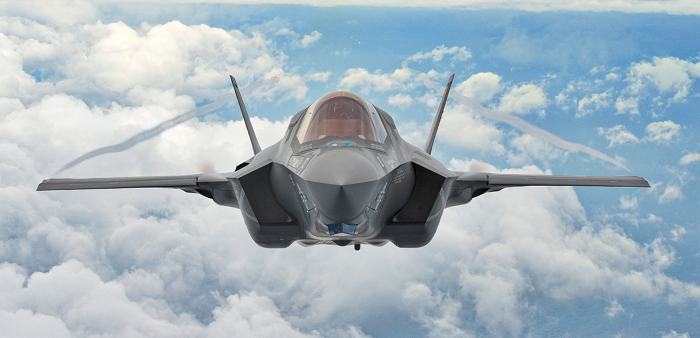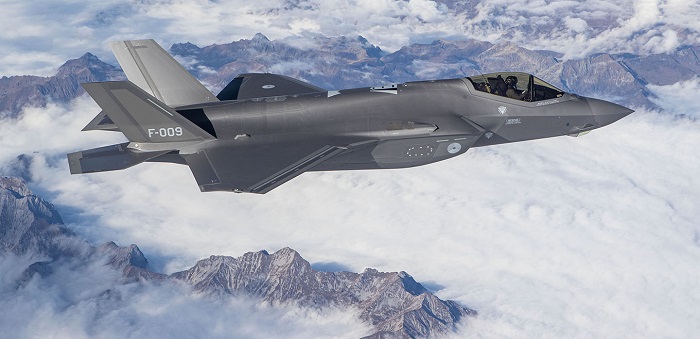ISABEL RUBIO ARROYO | Tungsteno
The F-35 is the most expensive weapon in history. The Pentagon's estimated cost to develop and acquire this fighter jet has risen from $398 billion to $412 billion, according to the latest program report from the US Department of Defence. This is more than the GDP of countries such as Egypt and Denmark, according to World Bank data.
One of the stealthiest fighters in history
This fifth-generation fighter, in addition to being one of the stealthiest fighters in history, can reach a speed of Mach 1.6. Unthinkable a few decades ago, as Tom Burbage, Lockheed's general manager for the program from 2000 to 2013, told The New York Times: "If you were to go back to the year 2000 and somebody said, ‘I can build an airplane that is stealthy and has vertical take-off and landing capabilities and can go supersonic,’ most people in the industry would have said that’s impossible."
Its creators boast that the "F-35 has an unmatched ability to evade enemy detection and enter contested airspace." These aircraft are built to fly undetected by radar and heat cameras, an incredible feat of engineering considering that the engine of supersonic aircraft tend to get very hot. In addition to the fact that this aircraft aims to go undetected by enemies, it also has offensive capabilities. In fact, it carries weapons internally in stealth configuration or externally in certain environments, sporting a total of more than 8,000 kilos of offensive weapons.
The F-35 has been designed to go undetected by enemy radar. Credit: Lockheed Martin.
More than a plane, a computer with wings
One standout feature of this beast of the skies is its impressive computing power. This prompted Air Force chief of staff General Dave Goldfein to call it "a computer that happens to fly." Or as Justin "Hasard" Lee, an Air Force F-35 pilot instructor, told Popular Mechanics: "There has never been an aircraft that provides as much situational awareness as the F-35."
F-35s collect and analyse a wealth of information from the battlefield and share it with ground, maritime and air assets. In addition to being able to receive voice commands, they are equipped with an array of advanced sensors. Some of these send high-resolution, real-time images to the pilot's helmet—which costs about $400,000—from six infrared cameras mounted around the aircraft. This allows the pilot to have a 360-degree view and see what is happening outside the aircraft at all times.

F-35s can receive voice commands and are equipped with an array of advanced sensors. Credit: Lockheed Martin.
From vertical landing to aircraft carrier operations
There are three variants of the F-35 that are very similar to each other. All are single-seat fighters and differ from each other mainly in the way they take off and land. The F-35A is designed to operate from conventional runways and is the most common variant, used by both the US Air Force and the majority of its international allied customers. "The [F-35A] would allow for migration by US forces to an almost all-stealth fighter force by 2025," Edward Aldridge, former Under Secretary of Defence for Acquisition, tells Popular Mechanics.
The second variant, the F-35B, can land vertically like a helicopter and take off over very short distances, allowing it to operate from more limited bases. Thanks to the power generated by this aircraft's engine, a swivelling jet pipe capable of rotating 95 degrees in 2.5 seconds redirects its thrust downwards, while lift fans beneath the cockpit and wings work together to produce powerful vertical thrust. Finally, the F-35C has been designed for aircraft carrier operations.
The F-35B can take off and land vertically like a helicopter. Credit: Lockheed Martin.
Behind all the technologies that make these models unique fighters, there is a colossal investment. In fact, the cost of the F-35 program may rise considerably over the next few years with maintenance. The Government Accountability Office warns that their operating costs could become unaffordable within 15 years. By 2036, the Pentagon could be spending an additional $6 billion a year more than it originally planned to maintain the fleet.
Despite its monumental cost, more and more powers are turning to the F-35 to replace their increasingly obsolete fleet of tanks and rapidly ageing fighters. The unstoppable trend of buying this type of aircraft to renew military arsenals is based on its potential to replace a number of different weapons and aircraft. The F-35 aspires to do almost everything a military could wish for and thus become the most versatile and advanced fighter aircraft of any that will be built in the coming decades.
· — —
Tungsteno is a journalism laboratory to scan the essence of innovation. Devised by Materia Publicaciones Científicas for Sacyr’s blog.
